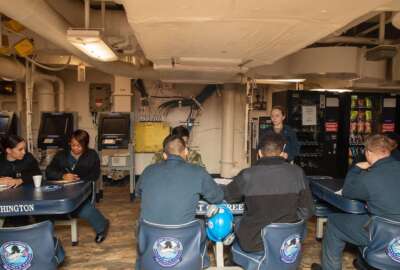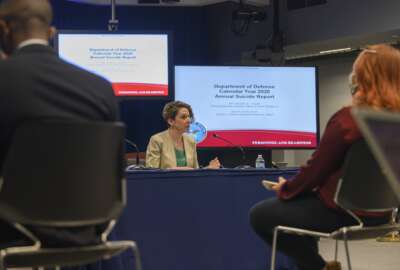Sailors facing long wait times for mental health assistance
As the Navy continues to investigate a rash of suicides aboard the USS George Washington, the service says it is dealing with serious issues involving mental health...
As the Navy continues to investigate a rash of suicides aboard the USS George Washington, the service says it is dealing with serious issues involving mental health access.
The Navy’s top enlisted sailor says the pandemic has exacerbated mental health issues throughout the service and there is a serious lack of mental health professionals to care for service members.
“Except for the most egregious cases like those at the precipice of suicide, appointment times average five weeks,” Master Chief Petty Officer of the Navy Russel Smith told the House Appropriations Defense Subcommittee Tuesday. “We’ve had some successes in doing more with less, but few outcomes remain achievable through efficiencies alone.”
The Navy has been able to make some extra capacity through programs like the Mental Health Operational Outreach Division in San Diego, which facilitates collaboration between medical facilities, support centers and embedded medical assets to provide about 100 walk-ins a week. However, Smith said many of those programs have been expanded to their full potential without additional resources.
The Navy, and the nation as a whole, is facing a shortage of mental health professionals. Smith said in his written testimony that the Navy still have half of its Deployed Resiliency Counselor positions vacant. Those positions provide short-term non-medical counseling that has been helpful for sailors aboard ships.
“While it’s important to recognize that we have had some success in the mental health struggle by making these adjustments and improvements, there are very few outcomes that remain to be achieved through efficiencies alone,” Smith said. “We also need to continue efforts to recruit and retain mental providers, and recognize as we do so that we are in competition with the civilian sector for this unique talent.”
The Navy is currently investigating five suicides on the USS George Washington. Three occurred last month.
Smith said he did not think the issue was leadership on first blush.
“As a sailor who has been through several dry dockings, it is the hardest thing, far harder than deployment,” he said.
Smith said Newport News is oversaturated because it is attending to two carriers. The location is having trouble accommodating the quality of life sailors need in terms of mental health care, traffic, parking, childcare and other issues.
He added that it is still too early to tell what the biggest problems are without finishing the investigation.
Smith said that chief petty officers need to do a better job at leaning in and being the first care providers to their sailors.
“They need to be that first compassionate shoulder, the person who says ‘What’s going on?’” Smith said. “They need to recognize a difference or a change in pattern that lets you know something is different and something needs to be done.”
The military is wrestling with some of its highest suicide rates. The Pentagon commissioned an independent review committee to look into military suicide and make recommendations.
“It is imperative that we take care of all our teammates and continue to reinforce that mental health and suicide prevention remain a key priority,” Defense Secretary Lloyd Austin wrote in the memo establishing the committee. “One death by suicide is one too many. And suicide rates among our service members are still too high. So, clearly we have more work to do.”
Copyright © 2024 Federal News Network. All rights reserved. This website is not intended for users located within the European Economic Area.
Scott Maucione is a defense reporter for Federal News Network and reports on human capital, workforce and the Defense Department at-large.
Follow @smaucioneWFED






